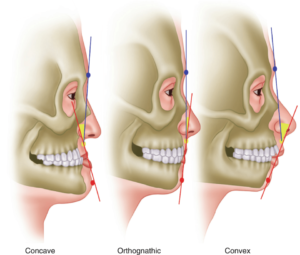 Orthognathic surgery (ortho-straight ; gnathic-jaw) or surgical straightening of the jaw is one of the fast developing branches in oral and maxillo facial surgery. Although challenging and intriguing, it is probably the most gratifying field in the whole maxillo facial surgery. Orthodontics is a well – established branch of dentistry which aims at the straightening of the teeth.
Orthognathic surgery (ortho-straight ; gnathic-jaw) or surgical straightening of the jaw is one of the fast developing branches in oral and maxillo facial surgery. Although challenging and intriguing, it is probably the most gratifying field in the whole maxillo facial surgery. Orthodontics is a well – established branch of dentistry which aims at the straightening of the teeth.
When to do orthognathic surgery?
Orthognathic surgery is mainly directed at the based bone defect. Surgery is instituted at the dento – developer segment and the based bone. The aim is functional, psychological and esthetic rehabilitation of the patient.
Who needs surgical orthodontics?
We will consider surgical orthodontic treatment for non-growing adult patients with improper bites and those with facial aesthetic concerns. Jaw growth is usually completed by age 16 for girls and 18 for boys. Since all growth must be completed before jaw surgery can be performed, it is rarely done on patients any younger than this. However, the pre-surgical tooth movements can begin one to two years prior to these ages. Surgical orthodontics can be done at any age after growth is complete, so there is no upper age limit on who can benefit from this treatment.
How does it work?
The first part of treatment involves having your braces placed on the upper and lower teeth. During your orthodontic treatment, which usually lasts 6–18 months, you wear braces and will visit me for scheduled adjustments to your braces every 4–8 weeks. As your teeth move with the braces, you may think that your bite is getting worse rather than better. However, when your jaws are placed into proper alignment during orthognathic surgery, the teeth will then fit into their proper positions.
Once the teeth are where they should be in relation to the jaws, you are ready for the surgical portion of this treatment. Surgery is performed in the hospital with an oral surgeon. You will see the oral surgeon for a consultation appointment prior to surgery and will learn specific information about the surgery at that time. Generally, in lower jaw surgery, the jawbone behind the teeth is separated and the tooth-bearing portion is moved forward or backward, as needed. In upper jaw surgery, the jaw can be repositioned forward or backward, or the jaw can be raised or lowered. Some cases require surgery of both jaws. Certain movements may require the jaws to be separated, with bone added/removed to achieve the proper alignment and stability. Other facial bones that contribute to alignment may also be repositioned or augmented.
When you have completed surgery, you should be able to return to school or work within two weeks. After the initial healing time (about 4-8 weeks), In most cases, braces are removed within 6–12 months following surgery. After your braces are removed, you will wear a retainer to maintain your beautiful new smile.
